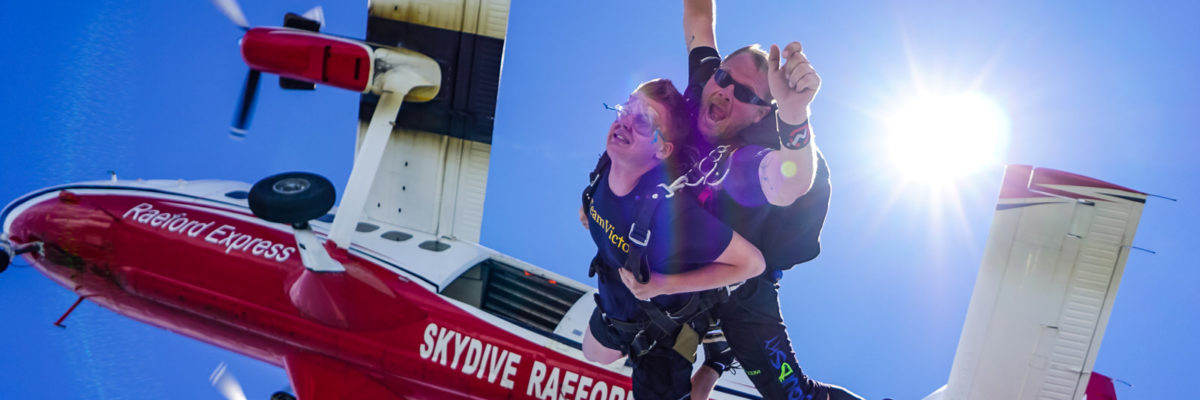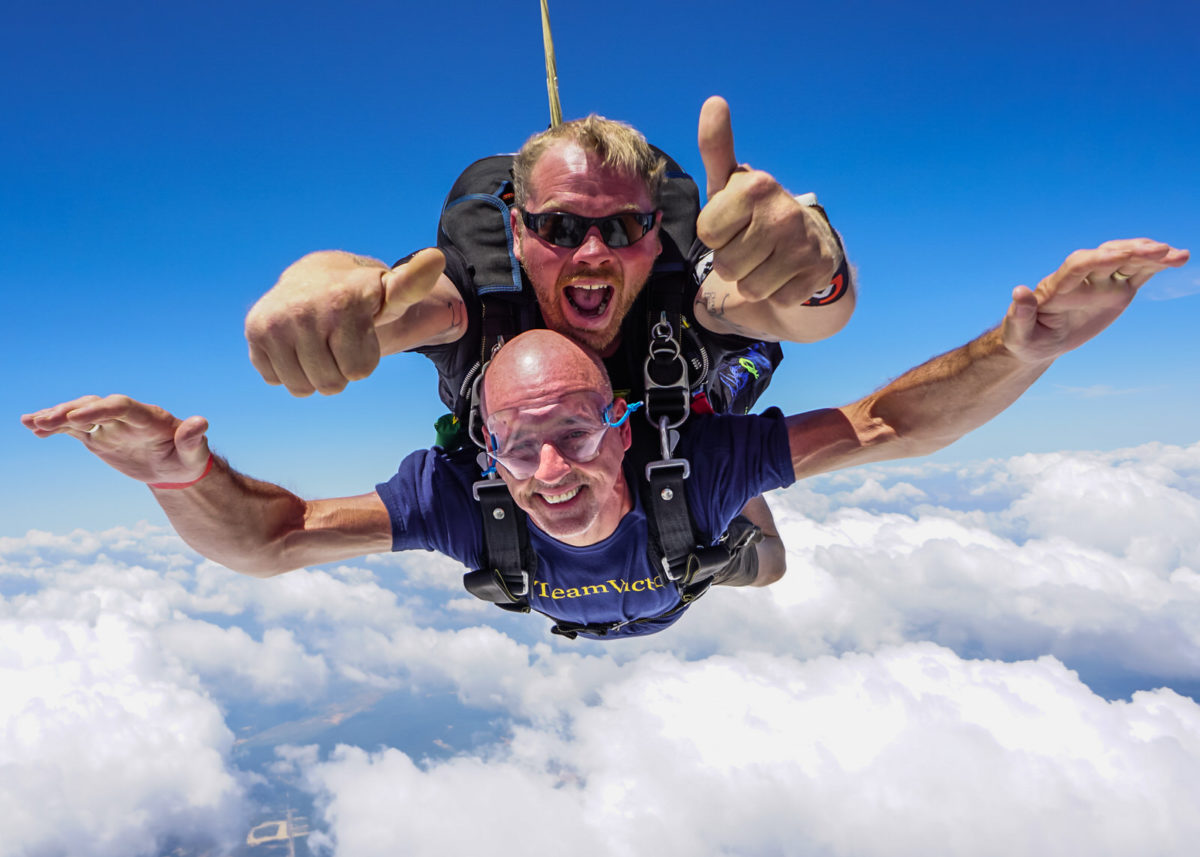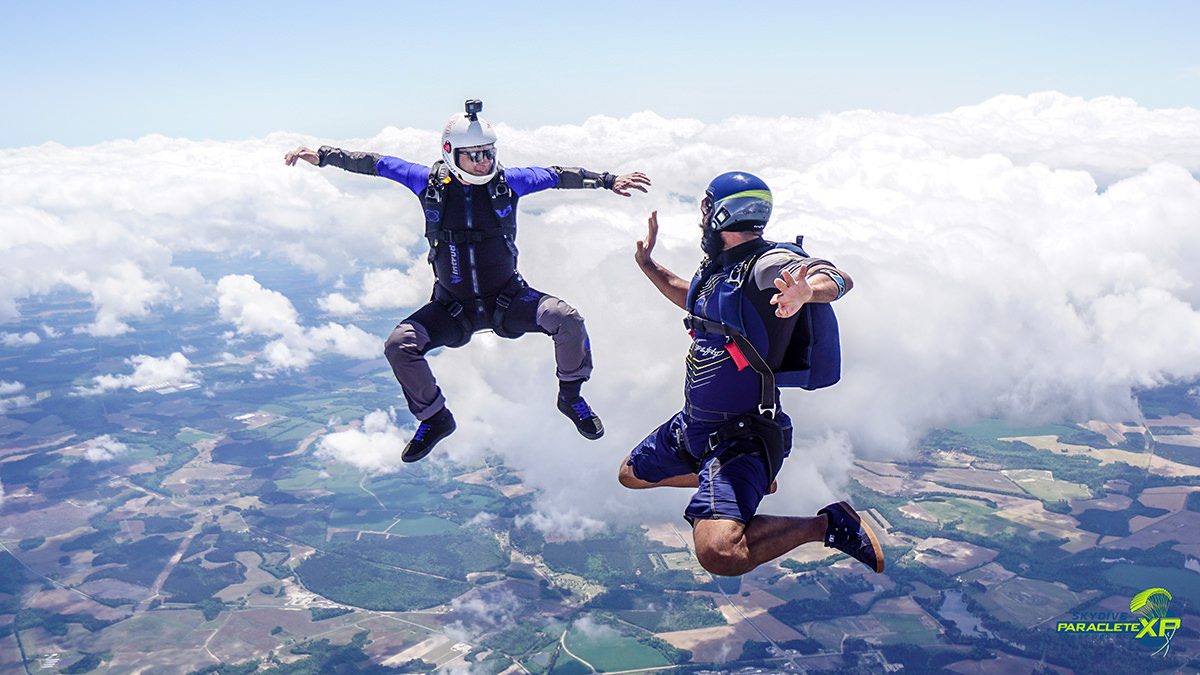
What Are The Best Weather Conditions for Skydiving?
Saturday, April 30, 2022
- Team FlyXP
- 4/30/22
- 0
- General, Weather
Rain or shine? Not the case when it comes to skydiving! Blue skies, warm temps, and a dash of light breeze; these are the ingredients for the best weather conditions for skydiving. Like most outdoor activities, you’ll want to plan for the weather as best as possible and keep in mind that it could change at any point.
The sport of skydiving inherently involves risk. Calculating and mitigating those risks requires close attention to a whole lot of details – including the weather. Hazardous weather conditions, like clouds, winds, and rain, are to be avoided when skydiving.
Here’s the skinny on the best weather conditions for skydiving:
BLUE SKIES!
A common salutation among skydivers is “Blue Skies!” When we say blue skies, we’re wishing good weather to one another. And by good, we mean little to no clouds!
We must be able to see the ground from the airplane.
Low Clouds = No Go. Skydivers navigate visually. We need to be able to see that our target is reachable before we jump out of the plane.
It is true that the airplane’s GPS could get relatively close to where we need to be but – most skydivers would agree – that it is a terrible thing to rely on. At Skydive Paraclete XP, landing off of the dropzone could place you in a tree, a pool, or the middle of nowhere in a literal corn maze. Not ideal!

SUMMER BREEZE, MAKES ME FEEL…
You’re on your way to the dropzone. It’s a beautiful summery day and you see blue skies. Looks promising! Don’t get too excited, there is another factor that can’t exactly be seen with the human eye – WIND! Yes, wind is a huge factor when determining the best weather conditions for skydiving.
We need to be able to control our parachutes during our descent to the ground.
High winds and wind gusts can have a major impact on canopy controllability. They are conditions that generate dangerous rotors, whip us around in bumpy turbulence, and even push us backwards! Therefore, dropzones enforce wind limits for skydivers.
Wind limits vary depending on the experience level of the skydiver. Skydivers with more experience have a little more freedom when deciding to jump in risky winds, as long as the pilot is ok with the weather conditions. Whereas, a student jumper may be advised – or restricted – to not jump (for example, if the winds are gusting above 14 mph) and will be placed on a “wind hold” until conditions improve.
This doesn’t necessarily mean we want NO winds – having just the right amount of breeze makes for a lovely landing.

RAIN, PAIN & OTHER OUCH ELEMENTS
Another (maybe not so obvious) risk factor is inclement weather, such as rain. Not only does rain affect the canopy ride by adding extra weight to the fabric, but it is also quite painful in freefall. A light rainfall might not seem like much of a big deal on the ground, but when falling at 120+ mph those little droplets can feel like needles!
Temperatures are much cooler up at altitude – about a 30-degree difference give or take – so while it might be scorching hot on the ground, it can be chilly in the sky. Jumping on a cold day means brutal freezing temps in the sky, which is pretty darn painful.
The perfect season for skydiving at Skydive Paraclete XP is usually Spring or late Summer/early Fall. For us, the best weather conditions for skydiving mean clear skies and temps between 75 and 85 degrees. Ahhhhhh.
BAD WEATHER, NOW WHAT???
If the weather conditions are unsafe for jumping, don’t worry, we will happily reschedule your jump or we can try to wait for conditions to improve. Luckily, we see about 215 sunny days on average here in Raeford – so there should be plenty of Carolina-blue days for skydiving! Jumping in the best weather conditions for skydiving makes your experience much more enjoyable, we promise it is worth the wait! Or, you are welcome to move your experience inside and try out our indoor skydiving wind tunnel instead.
Look up! Is the weather perfect for skydiving? If you’re not here, you can’t jump. Don’t miss your opportunity to fly: call now to book your spot in the sky! Blue skies!
Copyright © 2025, Skydive Paraclete XP, All Rights Reserved.
DropZone Web Design & Marketing by Beyond Marketing, LLC
